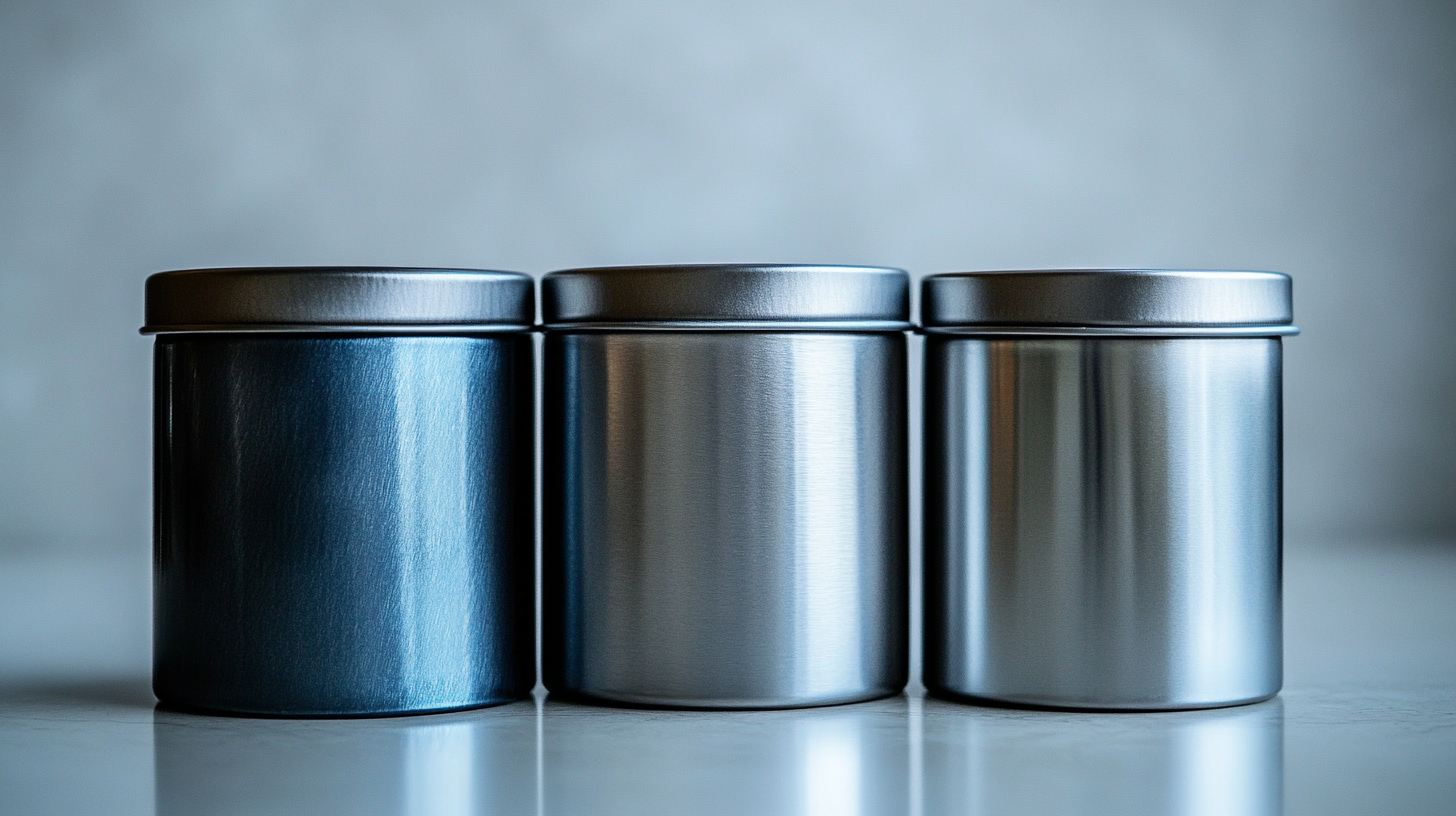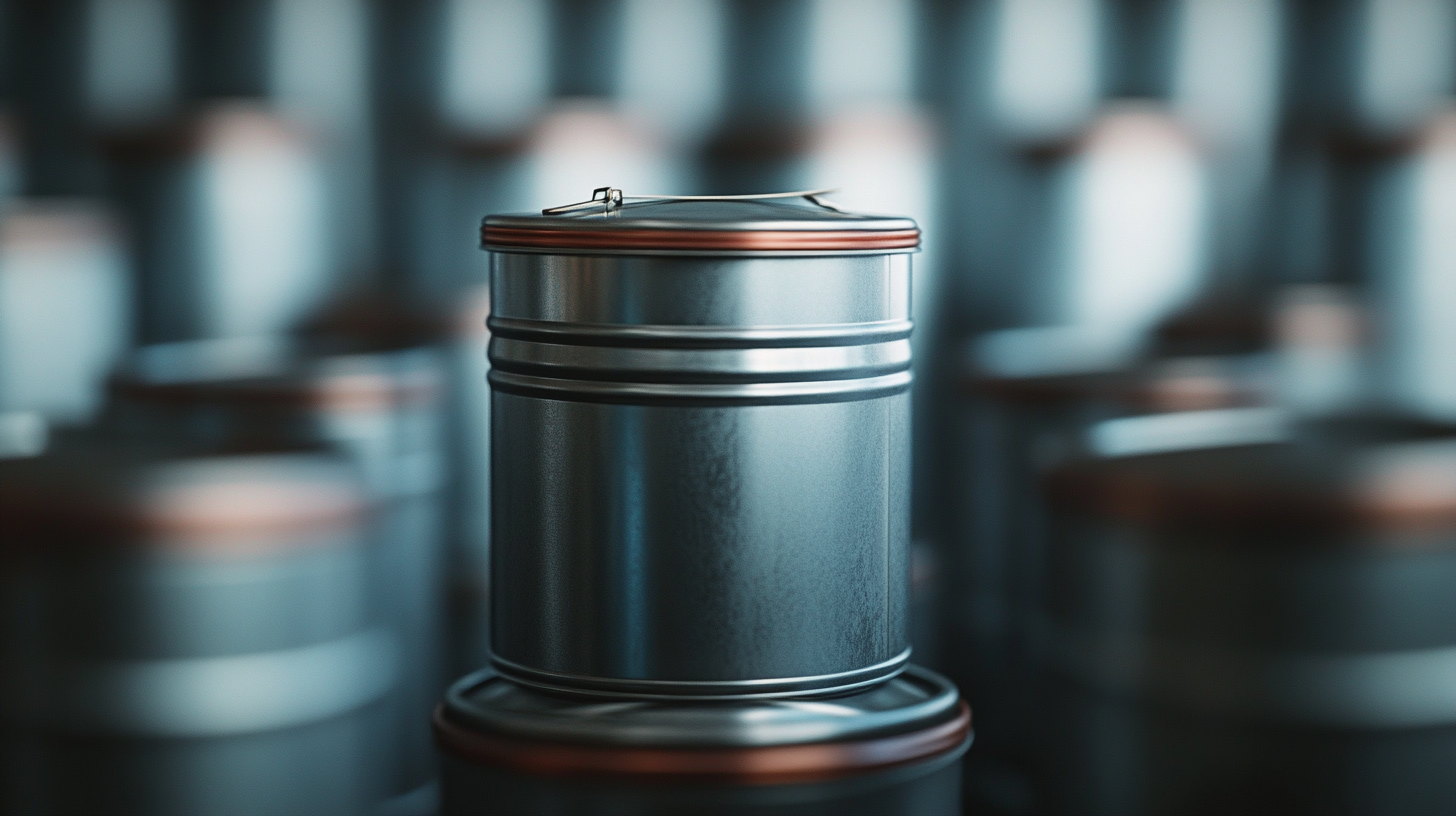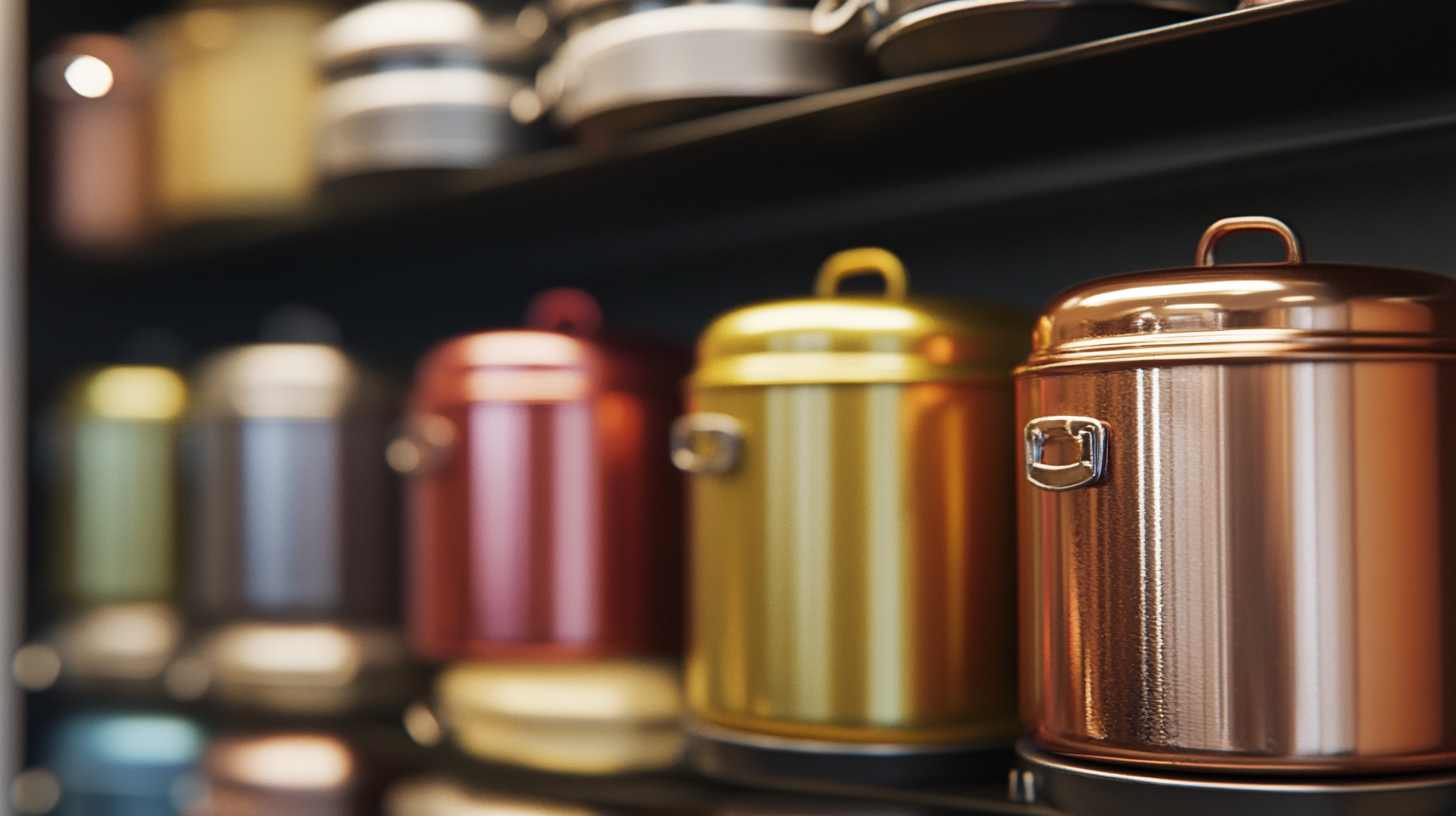 +817089618688
+817089618688
Free Standard Samples can be provided for you to check the quality.
Leave Your Message
 In the evolving landscape of food storage and preservation, the importance of selecting the right container cannot be overstated, particularly with the growing emphasis on sustainability and product longevity. A recent market research report by Mordor Intelligence projected that the global food storage containers market will reach $67.2 billion by 2025, driven by a rising focus on food waste reduction and freshness retention. Among various storage options, the Tin Canister stands out due to its durability and ability to maintain the flavor and quality of stored items. As consumers become more health-conscious and environmentally aware, understanding the features and benefits of Tin Canisters becomes essential for optimal storage solutions. This guide will explore critical factors in selecting the best Tin Canister, enabling both long-term freshness and sustainability in food storage practices.
In the evolving landscape of food storage and preservation, the importance of selecting the right container cannot be overstated, particularly with the growing emphasis on sustainability and product longevity. A recent market research report by Mordor Intelligence projected that the global food storage containers market will reach $67.2 billion by 2025, driven by a rising focus on food waste reduction and freshness retention. Among various storage options, the Tin Canister stands out due to its durability and ability to maintain the flavor and quality of stored items. As consumers become more health-conscious and environmentally aware, understanding the features and benefits of Tin Canisters becomes essential for optimal storage solutions. This guide will explore critical factors in selecting the best Tin Canister, enabling both long-term freshness and sustainability in food storage practices.
 When selecting tin canisters for food storage, several key factors must be considered to ensure optimal freshness and longevity. First and foremost, the material quality of the canister is crucial. According to a 2022 study by the Food Storage Institute, tinplate, recognized for its durability and airtight properties, effectively protects against oxygen, moisture, and light, which are critical elements that can spoil food. High-quality tin canisters with a food-safe coating can significantly extend the shelf life of dry goods, helping to preserve flavors and nutrients.
When selecting tin canisters for food storage, several key factors must be considered to ensure optimal freshness and longevity. First and foremost, the material quality of the canister is crucial. According to a 2022 study by the Food Storage Institute, tinplate, recognized for its durability and airtight properties, effectively protects against oxygen, moisture, and light, which are critical elements that can spoil food. High-quality tin canisters with a food-safe coating can significantly extend the shelf life of dry goods, helping to preserve flavors and nutrients.
Another important factor is the canister's size and design. A report from the National Institute of Food Technology highlights that canisters that offer tight seals and appropriate capacity reduce the risk of contamination and waste. Larger canisters might be ideal for bulk items like flour or sugar, while smaller ones are perfect for coffee or spices. Additionally, choosing canisters with transparent windows can facilitate quick identification of contents without repeated exposure to air, further maintaining food freshness over time. Thus, selecting the right combination of material, size, and design is essential for achieving optimal food storage outcomes.
When it comes to preserving the freshness of food, tin canisters offer a practical and stylish solution. These containers are not only durable but also provide an airtight seal that keeps moisture and air at bay, crucial factors in maintaining the quality of your stored items. Unlike plastic or glass alternatives, tin canisters are resistant to light, which helps prevent the degradation of sensitive ingredients such as coffee, tea, and spices. As a result, using tin canisters can dramatically extend the shelf life of your favorite staples.
Another major advantage of tin canisters is their versatility. Available in various sizes and designs, they can be adapted for different storage needs, whether you're keeping flour, sugar, or snacks. Their lightweight nature makes them easy to transport, while the sleek metallic appearance adds a touch of elegance to your kitchen or pantry. Additionally, tin canisters are eco-friendly and recyclable, making them a great choice for those looking to minimize their environmental impact. Embracing tin canisters as your go-to storage solution not only secures freshness but also enhances the overall aesthetic of your kitchen.
When selecting the ideal tin canister for storage, understanding the various types available and their specific applications is crucial. Tin canisters come in multiple designs, catering to different needs such as food storage, beverage packaging, and collectible items. The global metal containers market, projected to reach USD 140.3 billion by 2025, highlights the increasing demand for durable and effective packaging solutions. This growth is driven by a shift towards sustainable packaging materials, making tin canisters an attractive option for eco-conscious consumers and businesses alike.
Different types of tin canisters serve distinct purposes, from preserving dry goods like coffee or tea to packaging more complex products. For instance, aerosol cans are experiencing significant growth, with projections indicating an increase from USD 19.84 billion in 2024 to USD 26.78 billion by 2030. This trend underscores the versatility of metal packaging. Additionally, as the beverage container redemption programs gain traction, the emphasis on recyclability and reusable materials strengthens the case for tin canisters in packaging solutions across various industries.
When choosing a tin canister for optimal storage and freshness, it is essential to consider best practices for maintaining these containers to ensure their longevity. A recent market analysis indicates that well-maintained tin canisters can significantly extend the shelf life of dry goods by up to 50%. This is particularly crucial for food items that are sensitive to air, light, and moisture, which can compromise freshness. By investing in high-quality tin canisters and employing proper storage techniques, users can avoid spoilage and waste.
To maximize the effectiveness of tin canisters, ensure that they are cleaned and dried thoroughly before use. The International Packaging Institute reports that regular maintenance, such as inspecting seals and avoiding exposure to harsh chemicals, can prevent corrosion and degradation, thus enhancing the canister's lifespan. Additionally, storing canisters in a cool, dry place away from direct sunlight will not only protect the contents but also keep the canisters in pristine condition. These practices align with broader industry standards, noting that 70% of consumers now prefer durable, sustainable storage solutions that help maintain product integrity over time.

When it comes to food storage, tin canisters can be a superior choice compared to other options like glass or plastic containers. According to a report by the Food Storage Council, tin canisters can keep food fresh for up to four times longer than plastic alternatives. This is largely due to their ability to create an airtight seal that prevents moisture and air from degrading food quality. In contrast, plastic containers can allow air to seep in over time, leading to spoilage and loss of flavor.
In addition to maintaining freshness, tin canisters are also more sustainable. The Environmental Protection Agency states that metal can be recycled indefinitely without loss of quality, while plastic can only be recycled a limited number of times before it becomes unusable. Furthermore, the longevity of tin ensures that fewer resources are needed for packaging over time. With their effective insulation against light, moisture, and air, it is evident that tin canisters excel when compared to glass, which, although reusable, can often lead to food contamination if cracks or chips occur, and does not provide the same level of airtight protection.
| Storage Option | Material | Freshness Duration | Light Protection | Airtight Seal | Ease of Cleaning | Cost |
|---|---|---|---|---|---|---|
| Tin Canister | Tinplate | 6-12 months | High | Yes | Easy | $$ |
| Glass Jar | Glass | 6-12 months | Moderate | Yes | Easy | $$$ |
| Plastic Container | Plastic | 3-6 months | Low | Depends on lid | Moderate | $ |
| Ceramic Canister | Ceramic | 6-12 months | High | Yes | Moderate | $$$ |
| Vacuum Sealed Bag | Plastic | 1-3 years | Moderate | Yes | Easy | $ |
